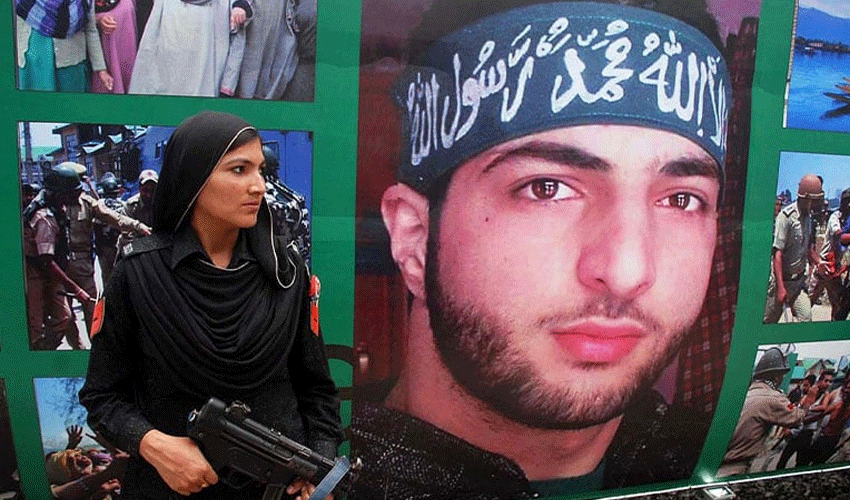Full shutdown in IIOJK on the anniversary of Burhan Wani’s martyrdom

A total shutdown occurred in Indian Illegally Occupied Kashmir (IIOJK) on Tuesday, commemorating the ninth death anniversary of Burhan Muzaffar Wani, the deceased commander of Hizbul Mujahideen, whose assassination in 2016 ignited a widespread uprising and revived demands for Kashmiri self-determination.
Retail establishments, marketplaces, and commercial centers were closed throughout the Valley, while public transportation was predominantly absent from the roads. Authorities dispatched a substantial number of security personnel to sensitive regions, including Pulwama, Anantnag, and Srinagar, implementing restrictions in certain areas of south Kashmir to avert any adverse incidents.
Burhan Wani, a once-promising student from Dadasar village in Pulwama district, became the emblem of a new resistance movement in Kashmir by leveraging social media. He was fatally shot during a confrontation with Indian forces in the Kokernag region of Anantnag on July 8, 2016.
His demise incited weeks of turmoil, culminating in the deaths of over 100 civilians and injuries to thousands. A curfew exceeding 50 days was enacted during that time, and mobile internet services were suspended for several months.
Wani, born on September 19, 1994, into a middle-class and educated family, demonstrated academic excellence, reportedly achieving over 90% marks throughout his education. He aimed to become a physician; however, an event in 2010—during which he and his cousin were reportedly assaulted by Indian soldiers over a minor issue—prompted him to enlist in the Hizbul Mujahideen at the age of 16.
Wani’s capacity to convey messages via videos and online communications garnered him significant acclaim among Kashmiri youth, with many regarding him as an emblem of resistance. In 2015, the Indian government declared a reward of ₹1 million for information resulting in his apprehension, while his elder brother, Khalid Wani, was killed by security forces that same year.
The aftermath of Burhan Wani’s death witnessed one of the largest funeral assemblies in the region, with an estimated attendance of 200,000 individuals despite curfews and restrictions. The fervent public response underscored the profound resentment and estrangement experienced by numerous individuals in the Valley.
While Wani’s detractors allege that he incited militancy, his proponents persist in commemorating him as a martyr and an emblem of the ongoing Kashmir conflict. Throughout the years, murals and graffiti representing Wani have emerged intermittently throughout the region, notwithstanding prohibitions against his veneration.
Indian authorities uphold a stringent position on separatist movements, while civil society organizations and human rights groups persist in voicing apprehensions regarding restrictions on dissent and freedom of expression in the region.